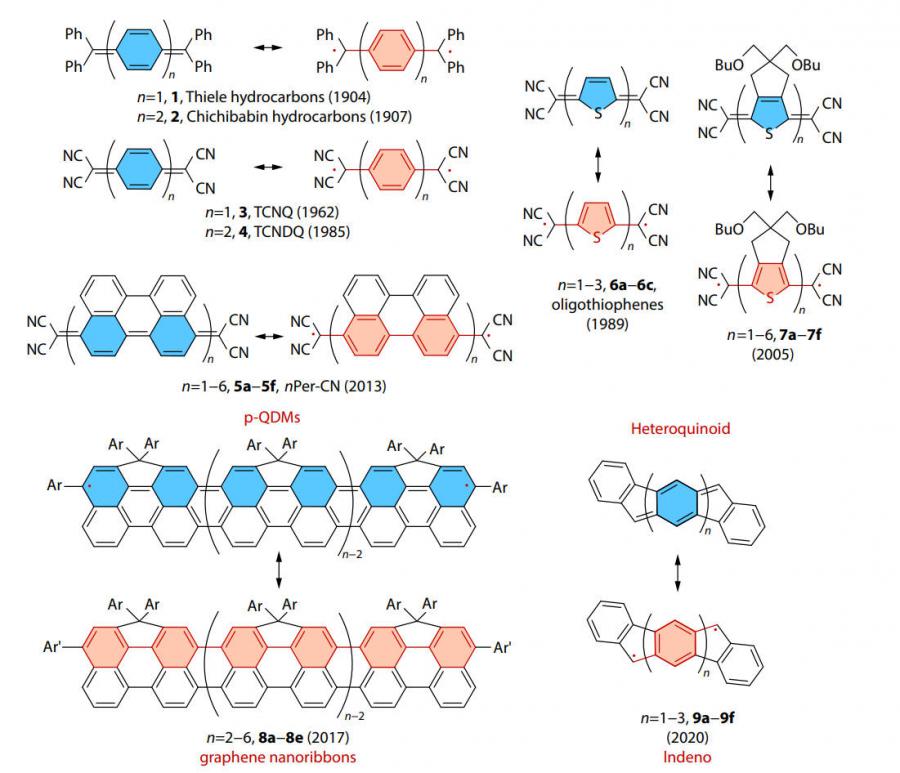
Unleashing the potential of high-spin polymers for next-gen optoelectronics and spintronics
USA, July 3, 2024 /EINPresswire.com/ -- In a significant article, scientists have shed new light on the capabilities of open-shell oligomers and polymers. These materials, distinguished by their high-spin ground states, hold promise for advancing technologies in ambipolar organic field-effect transistors (OFETs), photodetectors, thermoelectrics, and spintronics. The findings provide valuable insights for the development and application of these materials, signaling a step forward in the innovation of organic semiconductors.
The study of open-shell molecules, particularly those with high-spin ground states, has unveiled significant potential in organic electronics and magnetism. These molecules, characterized by unpaired electrons, exhibit unique properties such as long spin lifetimes and weak spin-orbit coupling, making them promising candidates for advanced technologies. However, the design and synthesis of stable open-shell polymers pose considerable challenges due to their thermodynamic and kinetic instability. Based on these challenges, further in-depth research is essential to develop effective strategies for their design, synthesis, and application in high-performance electronic and magnetic devices.
A recent review (DOI: 10.1007/s10118-024-3087-7) by researchers at Peking University, published on January 25, 2024, in the Chinese Journal of Polymer Science, provides a comprehensive overview of open-shell oligomers and polymers. The review highlights the theory, characterization methods, molecular design, and potential applications of these materials, underscoring their significance in advancing electronic and magnetic technologies.
The review provides a detailed examination of open-shell conjugated polymers, focusing on their theoretical foundations and characterization techniques. It covers the basic theory of diradicals and polyradicals and explores computational methods like quantum chemical calculations, as well as experimental approaches such as electron paramagnetic resonance (EPR) spectroscopy and superconducting quantum interference device (SQUID) magnetometry. The authors categorize open-shell polymers into quinoidal types and quinoidal-aromatic alternating copolymers, emphasizing their distinctive properties and potential applications. High-spin polymers based on donor-acceptor structures are highlighted for their remarkable stability, processability, and suitability for optoelectronic and spintronic devices. The review also discusses the challenges in achieving high-spin states while maintaining desired optoelectronic performance, offering insights into future research directions to overcome these obstacles and enhance the practical application of open-shell polymers.
Dr. Ting Lei, a leading researcher in the field, stated, "The advancements in the design and characterization of open-shell conjugated polymers mark a significant step forward in the development of next-generation electronic and magnetic devices. These materials' unique properties offer immense potential for various high-tech applications, from flexible electronics to quantum computing."
The potential applications of open-shell conjugated polymers are vast, spanning from organic field-effect transistors (OFETs) and photodetectors to organic thermoelectrics and spintronics. Their unique electronic and magnetic properties, combined with improved stability and processability, make them ideal candidates for future technologies. Continued research and development in this field could lead to significant advancements in electronic and magnetic device performance, opening new avenues for innovation in various industries.
DOI
10.1007/s10118-024-3087-7
Original Source URL
https://doi.org/10.1007/s10118-024-3087-7
Funding information
This work was financially supported by Beijing Natural Science Foundation (No. JQ22006) and King Abdullah University of Science and Technology Research Funding (KRF) under Award (No. ORA-2021-CRG10-4668.4).
Lucy Wang
BioDesign Research
email us here
EIN Presswire does not exercise editorial control over third-party content provided, uploaded, published, or distributed by users of EIN Presswire. We are a distributor, not a publisher, of 3rd party content. Such content may contain the views, opinions, statements, offers, and other material of the respective users, suppliers, participants, or authors.


